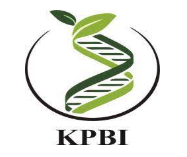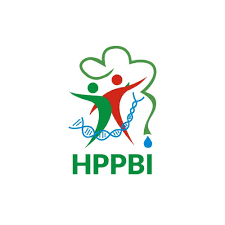MEMBEKALKAN KREATIVITAS MAHASISWA MELALUI STRATEGI PEMBELAJARAN BERBASIS STREAM MENGGUNAKAN KONTEN BIOTEKNOLOGI TRADISIONAL
DOI:
https://doi.org/10.15575/bioeduin.v9i1.4343Keywords:
Creativity Skills, Traditional Biotechnology, STREAMAbstract
References
Afianti, E., Rustaman, N. & Suwarma, I.R. (2017). Performance Assessment Implementation in STEM-based Learning to Investigate Student’s Creativity on The Cell Topic. Local Proceeding International Conference on Mathematics and Science Education. Hlm 857-863. Tersedia Online:// science.conference.upi.edu.
Agustina, T.W., Rustaman, N.Y., Riandi, & Purwianingsih W. (2017a). The Teaching Problems in Biotechnology. A Preliminary Research Toward Teachers’ of Secondary School in East Bandung. 4th International Conference on Research, Implementation and Education of Mathematics and Science Proceedings.Yogyakarta, May 15th-16th, 2017. Hlm BE 7- BE 11. Tersedia Online: http://seminar.uny.ac.id/icriems/proceedings2017.
___________________________________________. (2017b). The Learning of Composting in University. Journal of Physics: Conf. Series 895 012128, 1-7. DOI:10.1088/1742-6596/895/1/012128.
___________________________________________. (2018). Plant Physiology with Mathematic and Art Religion Engineering Science and Technology Approach. Advances in Social Science, Education and Humanities Research 261: 43-47. DOI: 10.2991/icie-18. 2018.8
Al-karasneh, S.M., & Saleh, A.M.J. (2010). Islamic Perspective of Creativity: A Model for Teachers of Social Studies as Leaders. Procedia Social and Behavioral Sciences, 2: 412–426.DOI: 10.1016/j.sbspro. 2010. 03.036.
Anwari, I., Yamada, S., Unno, M., Saito, T., Suwarma, I.R., Mutakinati, L. & Kumano, Y. (2015). Implementation of Authentic Learning and Assessment through STEM Education Approach to Improve Students’ Metacognitive Skills. K-12 STEM Education, 1 (3): 123-136. DOI:10.14456/ k12stemed. 2015.24.
Artola, T. (2013). Boys and Girls Creativity: Qualitative Differences in Divergent Thinking. Tersedia Online://researchgate.net.
Bahri, N.M., Suryawati, E., & Osman, K. (2014). Students Biotechnology Literacy: The Pillars of STEM Education in Malaysia. International Society of Educational Research, 10(3), 195-207. DOI: 10.12973/eurasia.2014.
a.
Basham, J.D., & Marino, M.T. (2013). Understanding STEM Education and Supporting Students Through Universal Design for Learning. Teaching Exceptional Children, 45, 8-15. Tersedia Online: https://www.researchgate.net/ profile/Matthew_Marino2/publication/275353986.
Boy, G.A. (2013).From STEM to STEAM:
Toward a Human-Centered Education. Tersedia Online: https://ntrs.nasa.gov/ search.jsp?R=20130011666.
Bybee, R.W. (2010). Advancing STEM Education: A 2020 Vision. Technology and Engineering Teacher, 70 (1), 30-35. Tersedia Online: https://eric.ed.gov/ ?id=EJ898909.
Cheng, V.M.Y. (2010). Teaching Creative Thinking in Regular Science Lessons: Potentials and Obstacles of Three Different Approaches in An Asian Context. Asia Pacific Forum on Science Learning and Teaching, 11(1), 1-21. Tersedia Online:// www.eduhk.hk/apfslt/download/v11_issue1_files/chengmy.pdf
____________________ (2011). Infusing Creativity into Eastern Classroom: Evaluations from Students Perspectives. Journal of Thinking Skills and Creativity, 6 : 67-87. DOI:10.1016/j.tsc. 2010.05.001.
Daud, A.M., Omar, J., Turiman, P., & Osman, K. (2012). Creativity in Science Education. Procedia - Social and Behavioral Sciences, 59: 467-474. DOI: 10.1016/j.sbspro.2012.09.302.
De Alencar, E.M.L.S. & Fleith, D.D.S. (2004). Creativity in University Courses: Perceptions of Proffesors and Students. Gifted and Talented International, 19 (1): 24-28. DOI: 10.1080/15332276.2004.11673029.
Dinas Pertanian & Ketahanan Pangan Kota Bandung (2017). Rencana Kinerja Tahunan Dinas Pertanian & Ketahanan Pangan Kota Bandung. Tersedia Online: https://ppid.bandung.go.id/?media_dl=18308
Direktorat Pembelajaran dan Kemaha-siswaan (2014). Buku Kurikulum Pendidikan Tinggi. Jakarta: Direktorat Jenderal Kementrian Pendidikan Tinggi.
Fatmawati, B. (2011). Pembelajaran Ber-basis Proyek untuk Meningkatkan Keterampilan Berpikir Kreatif. Jurnal Pengajaran MIPA, 16 (2): 85-92. Tersedia Online://journal.fpmipa.upi. edu.
___________ (2016). The Analysis of Students’ Creative Thinking Ability using Mind Map in Biotechnology Course. Jurnal Pendidikan IPA Indonesia, 5 (2): 216-221. Tersedia Online:https://journal.unnes.ac.id/nju/index.php/jpii.
Fraenkel, J.R., Wallen, N.E., & Hyun. H.H. (2012). How To Design and Evaluate Research In Education. United State : Mc.Graw Hill.Inc.
Griffin, P., McGaw, B., & Care, E. (Eds.). (2012) Assessment and Teaching of 21st Skills. New York: Springer Publishing Company.
Ismail, S., & Shaari, M.S. (2015). Fostering Creativity in The Islamic World:Towards an Effective Islamic Creative Industry. Indian Journal of Arts, 5(16), 111-119. Tersedia Online:// discoveryjournals.org.
Katanski, D. (2013). Bridging The Creativity and STEM Crisis. ASQ Advancing The STEM Agenda Conference Session 4-2. Michigan, June 3rd-4th, 2013. Hlm 1-4. Tersedia Online://asq.org.
Kementrian Pendidikan dan Kebudayaan. (2013a). Kurikulum 2013 Kompetensi Dasar Sekolah Menengah Pertama (SMP)/ Madrasah Tsanawiyah (MTS). Jakarta: Kementrian Pendidikan dan Kebudayaan.
__________________________________ (2013b). Kurikulum 2013 Kompetensi Dasar Sekolah Menengah Atas (SMA)/ Madrasah Aliyah (MA). Jakarta: Kementrian Pendidikan dan Kebudayaan.
Kim, Y. & Park, N. (2012). The Effect of STEAM Education on Elementary School Student's Creativity Improvement. CCIS 339: 115–121. DOI: 10.1007/978-3-642-35264-5_16.
Misgiyarta (2017). Produksi Nata De Soya dengan Substrat Limbah Cair Industri Tahu. Jakarta: Badan Penelitian dan Pengembangan Pertanian.
Movahedzadeh, F., Patwell, R., Rieker, J.E., & Gonzalez, T. (2012). Project-Based Learning to Promote Effective Learning in Biotechnology Courses. Education Research International, 1-8. DOI:10.1155/2012/536024.
Natsir, N.F. (2013). Paradigma Wahyu Memandu Ilmu dalam Pembidangan Ilmu-Ilmu Keislaman. Tersedia Online: http://www.uinsgd.ac.id/front/detail/mengenal_tokoh/nanat-fatah-natsir.
Oner, A.T., Nite, S.B., Capraro, R.M., & Capraro, M.M. (2016). From STEM to STEAM: Students’ Beliefs About the Use of Their Creativity. The STEAM Journal, 2(2), 1-16. DOI: 10.5642/steam.20160202.06.
Pendidikan Biologi (2015). Kerangka Kualifikasi Nasional Indonesia dan Profil Lulusan Pendidikan Biologi. Bandung: Fakultas Tarbiyah dan Keguruan. Tidak diterbitkan.
Presiden Republik Indonesia. Undang-undang Republik Indonesia no 12 tahun 2012 tentang Pendidikan Tinggi.
Rustaman, N.Y., Afianti, E., & Maryati, S. (2018). STEM based Learning to Facilitate Middle School Students’ Conceptual Change, Creativity and Collaboration in Organization of Living System Topic. Journal of Physics: Conf. Series 1013 012021, 1-8. DOI:10.1088/
-6596/1013/1/ 012021.
Septiani, A. (2016). Penerapan Asesmen Kinerja Dalam Pendekatan STEM Untuk Mengungkap Keterampilan Proses Sains. Isu-Isu Kontemporer Sains, Lingkungan dan Inovasi Pembelajarannya, Hlm 654-659. Tersedia Online://publikasiilmiah.ums. ac.id.
Suwarma, I. R. (2014). A Research on STEM Education Theory and Practices Method in Japan and Indonesia Using Multiple Intelligence Approach. [Doctoral Thesis]. Shizuoka University.
Southern of Colleges and Schools Commission on Colleges (2014). Higher-order Skills in Critical and Creative Thinking. NC State University.
Steels, F. & Aubusson, P. (2004). The Challenge in Teaching Biotechnology. Research in Science Education, 34: 365-387. Tersedia Online:link.springer. com.
Stiggins, R. J. (1994). Student-Centered Classroom Assesment. New York: Macmillan College Publishing Company.
Subandi, H.M. (2010). Mikrobiologi, Perkembangan, Kajian, dan Pengamatan dalam Perspektif Islam. Bandung: PT. Remaja Rosdakarya.
The National Research Centre on The Gifted and Talented (2002). Assessing Creativity: A Guide for Educators. Hillside Road: University of Connecticut.
Thieman, W.J., & Palladino, M.A. (2009). Introduction to Biotechnology. San Fransisco: Pearson Education, Inc.
Torrance, E.P. (1977). Creativity in the Classroom; What Research Says to the Teacher. Washington D.C.: National Education Association.
Usak, M., Erdogan, Prokop, P., & Ozel, M. (2009). High School and University Student’s Knowledge and Attitudes Regarding Biotechnology. Biochemistry and Molecular Biology Education, 37(2), 123-130. DOI: 10.1002/bmb. 20267.
Wulan, A.R. (2018). Menggunakan Asesmen Kinerja untuk Pembelajaran Sains dan Penelitian. Bandung: UPI Press.
Wusqo, I. U. (2014). Upaya Mendorong Kemampuan Berpikir Kreatif Mahasiswa dalam Inovasi Konservasi Pangan. Indonesian Journal of Conservation, 3 (1): 75-82. Tersedia Online: ://journal. unnes.ac.id,.
Zainul, A. (2001). Alternative Assesment. Universitas Terbuka: Jakarta.
Downloads
Published
How to Cite
Issue
Section
Citation Check
License
Authors who publish in Jurnal BIOEDUIN agree to the following terms:
- Authors retain copyright and grant the journal right of first publication with the work simultaneously licensed under a Attribution-ShareAlike 4.0 International (CC BY-SA 4.0) License that allows others to share the work with an acknowledgment of the work's authorship and initial publication in this journal.
- Authors are able to enter into separate, additional contractual arrangements for the non-exclusive distribution of the journal's published version of the work (e.g., post it to an institutional repository or publish it in a book), with an acknowledgment of its initial publication in this journal.
- Authors are permitted and encouraged to post their work online (e.g., in institutional repositories or on their website) prior to and during the submission process, as it can lead to productive exchanges, as well as earlier and greater citation of published work (See The Effect of Open Access).








